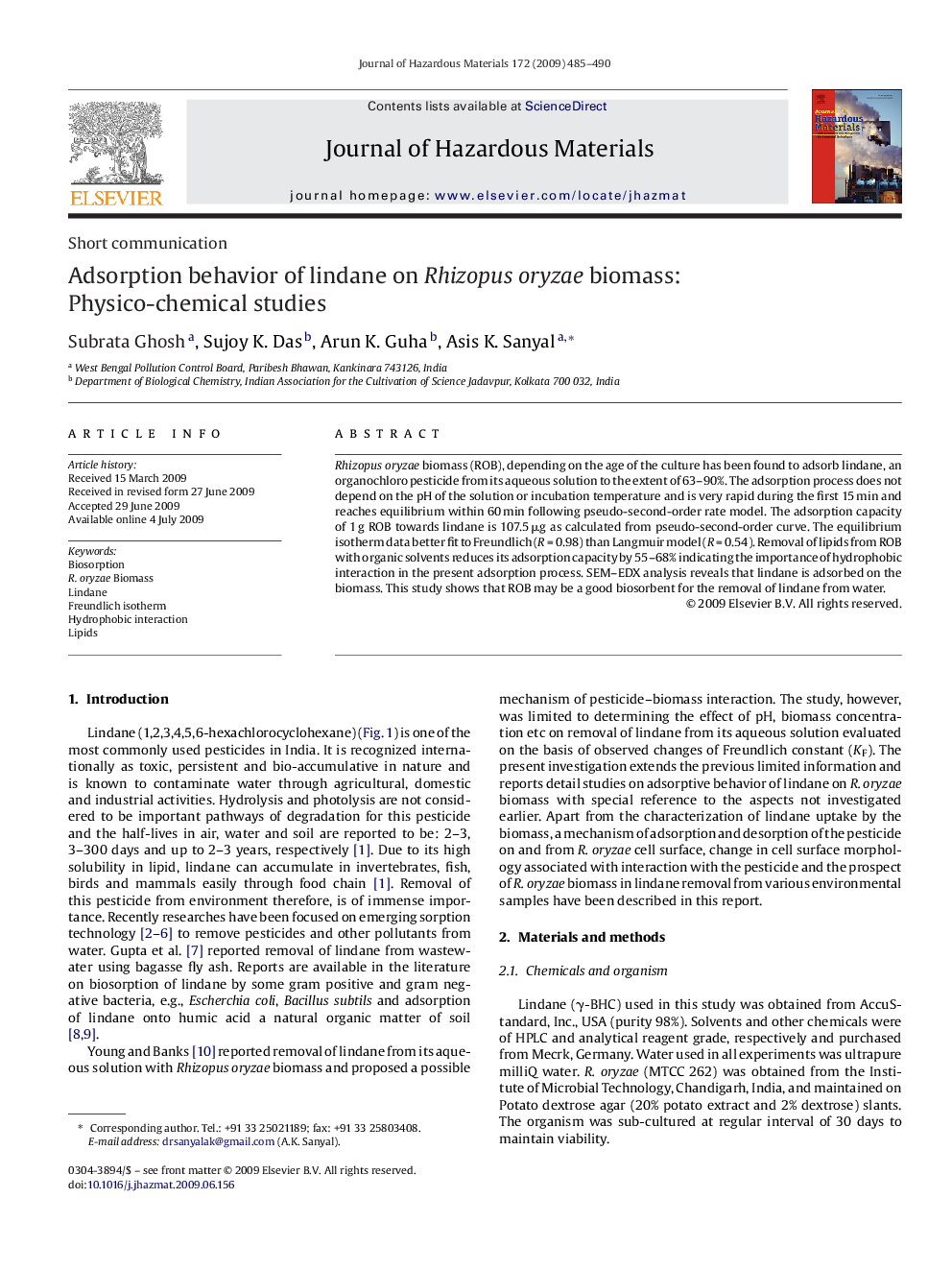| Article ID | Journal | Published Year | Pages | File Type |
|---|---|---|---|---|
| 581091 | Journal of Hazardous Materials | 2009 | 6 Pages |
Abstract
Rhizopus oryzae biomass (ROB), depending on the age of the culture has been found to adsorb lindane, an organochloro pesticide from its aqueous solution to the extent of 63-90%. The adsorption process does not depend on the pH of the solution or incubation temperature and is very rapid during the first 15 min and reaches equilibrium within 60 min following pseudo-second-order rate model. The adsorption capacity of 1 g ROB towards lindane is 107.5 μg as calculated from pseudo-second-order curve. The equilibrium isotherm data better fit to Freundlich (R = 0.98) than Langmuir model (R = 0.54). Removal of lipids from ROB with organic solvents reduces its adsorption capacity by 55-68% indicating the importance of hydrophobic interaction in the present adsorption process. SEM-EDX analysis reveals that lindane is adsorbed on the biomass. This study shows that ROB may be a good biosorbent for the removal of lindane from water.
Related Topics
Physical Sciences and Engineering
Chemical Engineering
Chemical Health and Safety
Authors
Subrata Ghosh, Sujoy K. Das, Arun K. Guha, Asis K. Sanyal,
